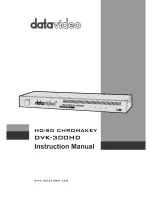
2 of 11
WX-501-0534 • 01.22
and two grounds—for wiring RS-485 communication. This screw terminal block can be removed for easy
preinstallation wiring. It will not be necessary, however, to wire RS-485 through the screw terminal block if the
device is connected to a T-bus with uninterrupted RS-485 communication.
The front of the device has a DB-9 connector for RS-232 communication. Connect a straight-through cable from
this port to a computer to configure the device using Click Supervisor.
Any data on one port will be transmitted simultaneously on all other ports.
Antenna
The Click 400 has a reversed polarity SMA antenna connector. An external antenna can be mounted on the
exterior of the traffic cabinet or up on a pole for maximum range. A whip antenna can also be used inside the
cabinet. If the antenna is installed inside a metal cabinet, the range will be diminished.
Configuration Features
The faceplate of the Click 400 has the following four LEDs:
■
PWR (red) lights up when the device has power.
■
Wireless Link (blue) lights up when the device is set to be a client and can see a server. If the device is set up
to be a server, this LED will blink.
■
TD (green) lights up when the device is transmitting data.
■
RD (yellow) lights up when the device is receiving data.
The LEDs are also used to indicate operation modes, which will be discussed later in the On-device Configuration
section of this document.
The front also has a push-button labeled Mode Switch, which is used to cycle the Click 400 through operation
modes. This will be discussed in the On-device Configuration section of this document.
On-device Configuration
The Click 400 can be configured using the push-button on the lower part of the faceplate. Press and hold the
push-button to cycle through the different operation modes; release the button when the desired mode is
reached. A quick press and release of the push-button will exit out of any mode and return the unit back to normal
operation. The table below and the following sections describe the different operating modes.
Mode
LED
Definition
Autobaud
Green (solid)
To autobaud the Click 400, press the push-button, then release when the
green LED turns on. The Click 400 is autobauding when the green LED is on
and the red LED is blinking. When it is finished autobauding, the red LED will
turn on. If you autobaud a Click 400, the device will always be set up as a
client.
Link Test (Client)
Blue (solid)
To set the Click 400 in Link Test mode as a client, press the push-button, then
release when the blue LED turns on. If the yellow LED is blinking, then the
module is receiving data out of sequence (missing some data). If the green
LED is blinking, then the module is receiving all data in order.
Link Test (Server)
Blue (flashing)
To set the Click 400 in Link Test mode as a server, press the push-button, then
release when the blue LED is blinking. The Click 400 is transmitting data if the
red and blue LED stay on and the green LED blinks.





























